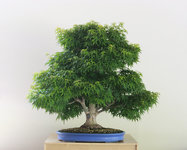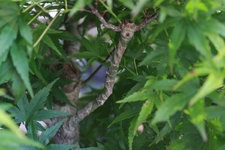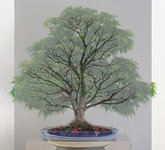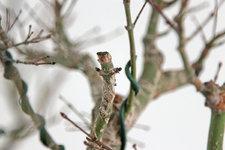SilenceDogwood
Seedling
Sergio, beautiful tree and progression. I really like the blue Reiho pot with it as well. Have any photos earlier than 2013?
Your humble servant,
S. Dogwood
Your humble servant,
S. Dogwood
I saw the same too, Brian and I'm sure @MACH5 will transition to finer branching in that area when the time is right. I look at this tree often - it's on the lock screen of my phone. I've got a small Sharp's Pygmy and they are a wonderful maple. Buds pop all over it and it's not really that vigorous yet. Can I ask you Serge what is the healing capacity of this species? Have you had to remove pinkie sized branches at all?
Sergio, beautiful tree and progression. I really like the blue Reiho pot with it as well. Have any photos earlier than 2013?
Your humble servant,
S. Dogwood
That is a beautiful tree Serg! . I like the photo and lightning used. Any plans on an updated 360 thing you did before.?
I'm also interested in the healing of large scars. Planning on removing an inch and half branch on my Sharp's.
One of my all time favorite trees indeed. Just gets nicer and nicer.Have not updated this thread in well over a year. This maple went through some big edits last year which included a larger branch in the apex. I also air layered another large branch that was not needed anymore. The air layer took a long time but ultimately it was successful. I will use it as future graft stock.
Below is the maple today as it looked entering the new decade. 2020 marks the 10th year I've had this tree. I have learned much caring and working with it and has become an iconic tree in my garden. Looking forward to the next ten years!
Due to the heavier than usual pruning, I got a profusion of back budding which included the trunk. I am leaving many of these to develop into small branches to add additional detail to the overall design. They also could be used in future years to replace thicker branches.

Supposed I'm resurrecting this post for such an awesome tree. I had a question regarding defoliation of sharp's pygmy maples that are still in growth/development phase. Mine is pretty large already a dense canopy where some of the inside leaves/branches are being shaded out, however the leaves are still soft and shoots are still extending.Hi Paul. The healing of scars on this cultivar is slower in my experience. They do heal but do take a while. Nowhere near as fast as a straight A. palmatum. They are generally not as vigorous either. However, with younger trees things may happen a lot quicker.
Something to watch out for is their density mainly because leaves grow on extremely small internodes. The dense canopy if not thinned out will surely killed all that's growing inside. Partial defoliation is something I need to do on this tree without fail if I want to encourage the development of smaller interior shoots.














What are you wrapping your wire with?Happy New Year all!
Lots of strong growth resulted from the heavy dose of Osmocote that I applied earlier last year. As I am getting this tree back on track, I recently reworked it somewhat and now found the back of it had developed into a really nice new front. This is not uncommon and one must always reassess their own trees from time to time. I chose to not cut back much and many tips are still coarse. I want to keep the momentum going for this spring and then cut back more precisely after the first flush. Structural refinement pruning of the tips will happen after leaf fall this year.
The tree today.
View attachment 523051
View attachment 523052
View attachment 523053
View attachment 523054
Branch that was drastically cut back to improve its structure. Although the new buds that resulted remained dormant, they are set to open and develop in the spring.
View attachment 523055
As mentioned, many areas were purposely left uncut, leaving many shoots with three and four nodes to keep the tree's forward momentum. Later, these tips will be cut back for refinement.
View attachment 523060
Many fine shoots were left to develop further. The aim here is not to develop them as main branches but rather keep them small to add fine detail to the design and provide scale contrast with the larger primary branches.
View attachment 523061
Looking good Sergio! I have a sharp's pygmy that will likely need similar treatment.
What are you wrapping your wire with?
No, mostly shortening of long taper-less branches. I may still need to fertilize it a bit more before this though. I wouldn't say that it's weak, but the tree has slowed down nicely.Thanks Dan. Do you mean reinvigorate it?
No, mostly shortening of long taper-less branches. I may still need to fertilize it a bit more before this though. I wouldn't say that it's weak, but the tree has slowed down nicely.
Great tree, Sergio. Pictures with details of the branches showing really nice refinement. I'm not familiar with this particular cultivar but I understand it could be challenging to work with some. Wrapping the wire is nice helpful technique.
Wishing you all the best in 2024.
